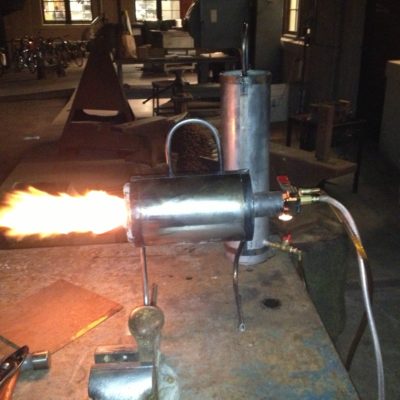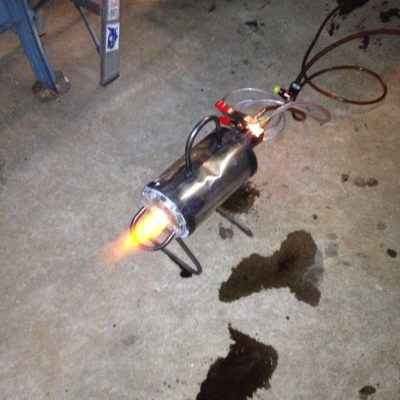This burner represents my first attempt at a high-temperature heat source for blacksmithing in California. In my home state of Pennsylvania coal is king, but out here getting coal is nigh impossible. I decided to use waste oil from restaurants as the fuel because it is omnipresent, more energy-dense and safer than propane, and it is a renewable resource.
My additional requirements, as a college student, were that it must be small and portable as well, putting most of the common designs on the internet out of reach.
After fortuitously finding a steel shipping can in the right size, I welded on additional steel supports, legs, and a handle for one-handed carrying, and cut a hole in the flat base for the fuel/air mixture to enter. I also crafted a tight-fitting cap from rolled sheet steel with a tool rest to hold my work inside the fire. I then lined the inside of the can with an extremely high-temperature castable refractory cement.
I also attempted to machine the fuel injector, powered by compressed air. While the forge could operate with this nozzle, it required a smoky, smelly pre-heat to burn properly. I decided to purchase a more intricately machined nozzle, and this works much better, taking a light without the need for pre-heating.
In the next iteration, I plan to use the high-temperature castable refractory for the face of the furnace, and then a fibrous refractory for the outer layer. This construction will greatly increase the insulating power of the forge, allowing it to attain higher temperatures. I also plan to experiment with different methods of enriching the air entering the forge.

